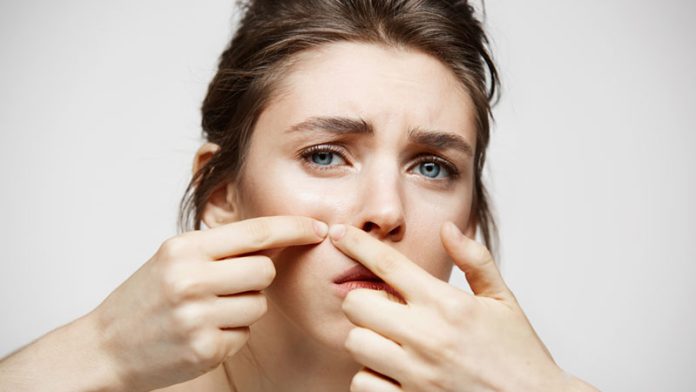
Acne is a skin disorder that creates pores, pimples, blackheads, and whiteheads on the face, arms, neck or even chest and back. It happens when the skin’s natural oil gets trapped in the oil ducts, and sometimes, the blocked pores allow bacteria called P. acnes to grow in it. It is the most common skin disorder affecting young men and women. However, it affects men and women in different ways. Men tend to have a more severe form of acne, while in women, acne develops due to some hormonal disturbances during menstrual cycles. Identifying the types of acne can help you get the proper treatment, and in this article, we will discuss the types of acne to help you know your acne type.
Different Types Of Acne
Acne is not a life-threatening condition but has lifelong psychosocial effects on some people. It leads to frustration as it causes disfiguration or scaring of the skin; people with acne and acne scars often develop anxiety and depression. It affects between the age group of 12 and 25; however, it also sometimes affects people in their 30s and 40s. Not all acne is the same; let’s read about the different types of acne commonly found.
1. Whiteheads And Blackheads
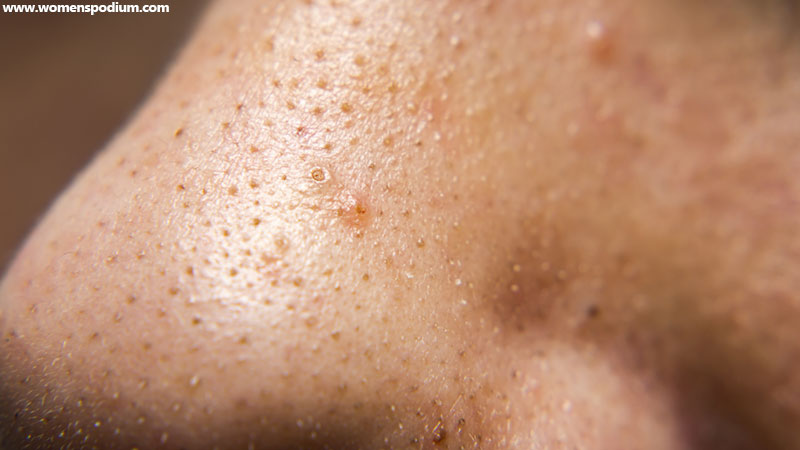
The basic acne lesions which are most commonly found are whiteheads and blackheads. It is enlarged and plugged hair follicle. In case of clogged follicles remain beneath the skin, it forms a white bump on the skin called whiteheads. And the follicle that reaches the skin’s surface and opens up is called a blackhead because it looks black on the skin.
2. Papules
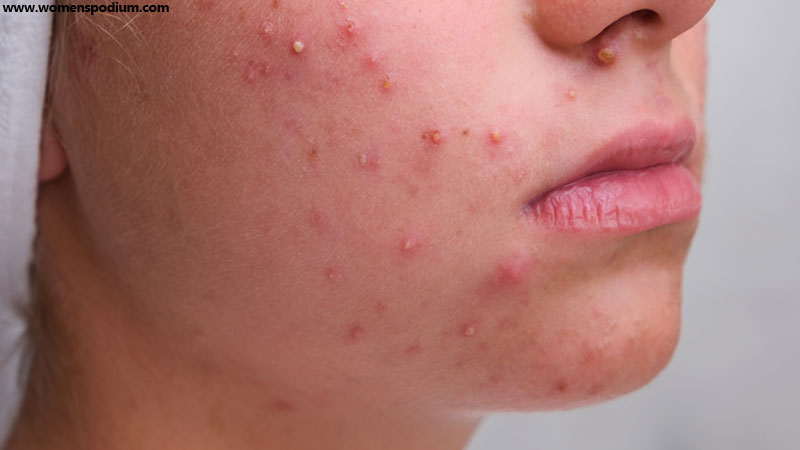
A papule is an inflamed solid or cystic raised spot on the skin less than 1 centimetre (cm) wide and is a type of skin lesion. It can be tender to touch. If there are groups of small papules on the skin, they may be invisible, but one can feel them when touched.
3. Pustule
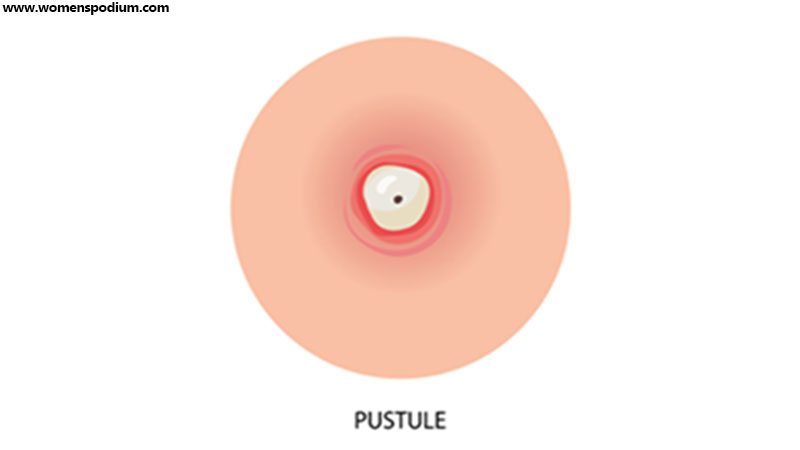
It is dome-shaped acne-containing pus, consisting of white blood cells, dead skin cells, and bacteria. A pustule has hair in the center and appears as a red circle with a white or yellow color in the middle. It makes you irritable on and off, and you might think to pop it out, but you must know how to pop up pimples before squeezing pustules.
4. Nodules
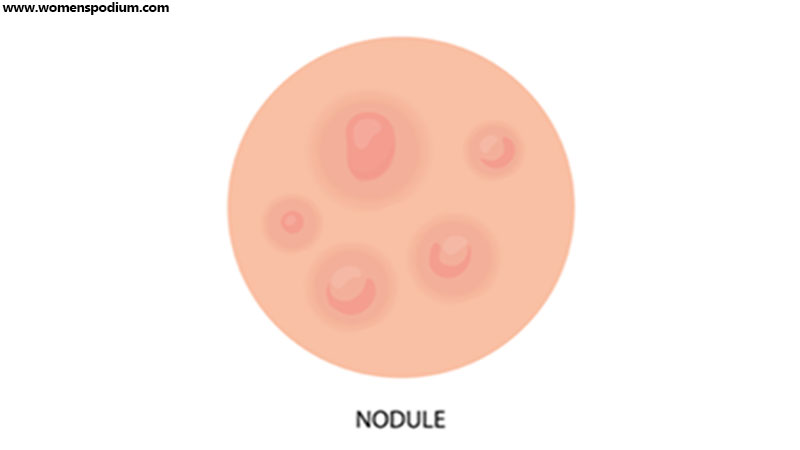
An acne nodule is the most severe form of acne; it consists of large size of acne spots and hard bumps under the skin’s surface. Never attempt to squeeze such lesions. It can turn red as the surrounding area gets more inflamed and may cause a severe impact on your skin, lasting several months longer than usual. Scarring is very common in this type of acne. It is always advisable to visit dermatology in case of severity.
5. Cystic
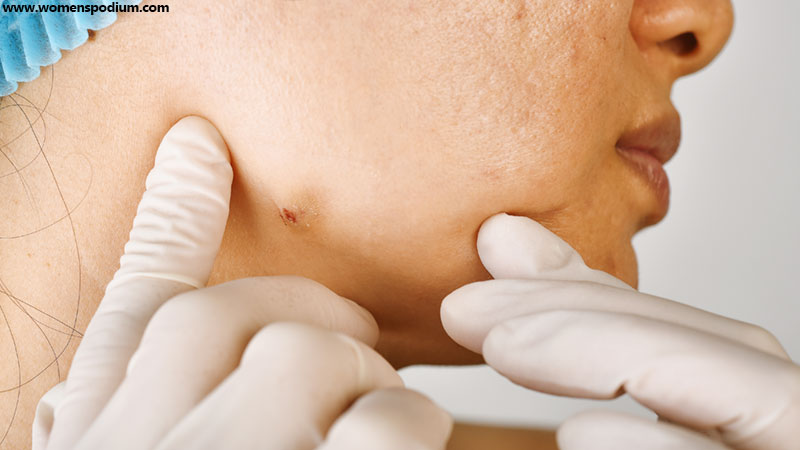
Cystic acne is an unusual and severe form of acne. It is inflammatory acne that causes painful, pus-filled pimples to form deep under the skin. As the pores in the skin get blocked, they can lead to infection and inflammation. It is more or less similar to nodules, but the only difference is that it is filled with pus. It is painful for most people and is 5 millimetres or more in diameter. It also leaves a scar on the spot. Do not squeeze such types of acne. It will do no good; instead, it may cause a deeper infection and more pain. Visit dermatologists; they can give you some treatment to prevent scaring and swelling caused due to cystic acne.
6. Acne Rosacea
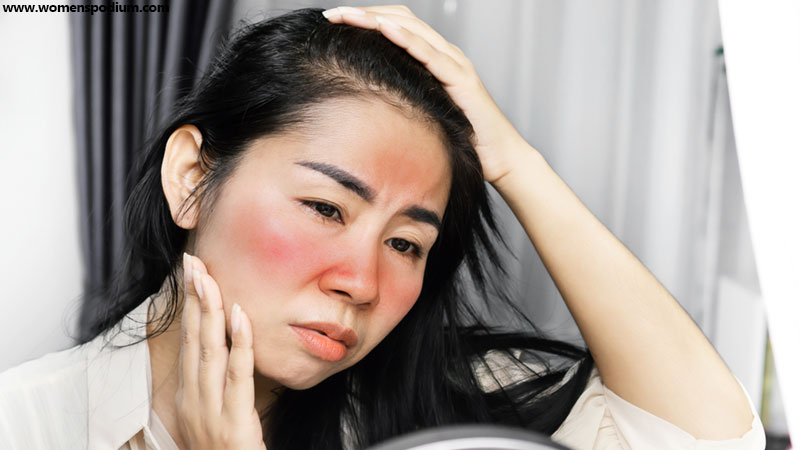
Rosacea is a common skin condition that causes reddish or flushing and visible blood vessels on your face. It may also spawn small, pus-filled bumps. This type of acne is most common in people who are over the age of 30. It affects millions of people worldwide. The main symptoms of this type of acne are red or pink patches on the face, visibility of broken blood vessels, and small red bumps. Most people do not even know they have acne rosacea. They simply think the facial condition might be due to sunburn or something else.
7. Acne Conglobata
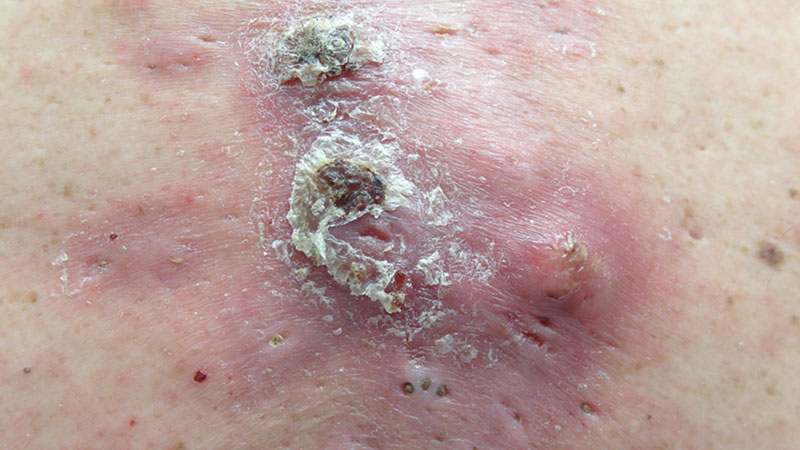
Acne conglobata is a rare but severe form of acne vulgaris. It affects the face, chest, back, buttocks, and thighs. It is present on the skin with deep burrowing filled with painful pus interconnected to each other with widespread blackheads. Scar formation and disfigurement of the body are standard with this type of acne. This type of acne is most commonly seen in men rather than women. It causes severe skin damage and leaves numerous scars on the infected skin. Acne conglobata primarily affects men between the age of 18 and 30 years.
8. Acne Fulminans
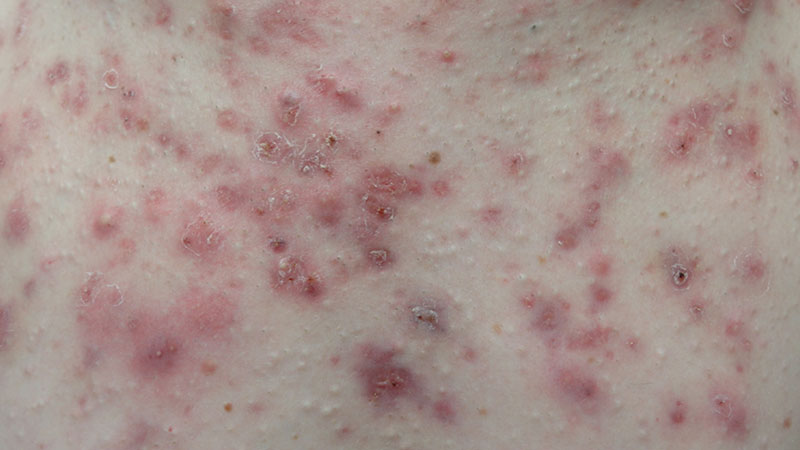
Acne maligna or acne fulminans is a rare skin disorder, steering acute, painful, ulcerating, and hemorrhagic clinical form of acne. This type of acne is basically a sudden onset of highly destructive inflammation. The symptoms are severe and ulcerating acne accompanied by fever. It may cause bone lesions and laboratory abnormalities; in fact, it is so severe that it may especially lead to the aching of joints, hips and knees.
9. Gram-Negative Folliculitis
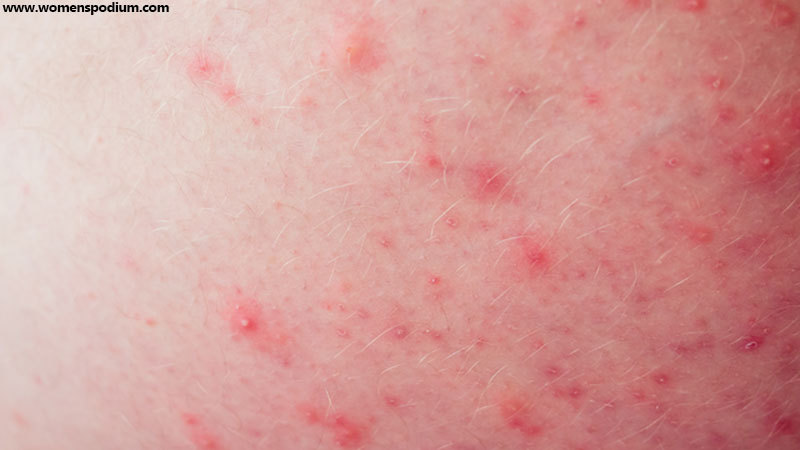
This is not acne, but we are mentioning it because it resembles acne. Gram-negative folliculitis is an acne-like disorder; it is a condition when inflammation of follicles is caused by a bacterial infection. It is a pustular rash resembling acne. It is often mistaken as a worsening of acne as it usually occurs in patients with existing acne. It may be the result of prolonged use of antibiotics or long-term antibacterial treatment that acne patients use to treat severe types of acne.
Acne is most common and seen in teenagers, although it affects people of all ages. The above share types of acne can be mild to severe. It is believed that acne is usually caused due to hormonal imbalances, diets, vitamin deficiency, and stress. There may be many other causes. You should always be watchful if your skin is acne prone, don’t ignore it. There are effective treatments available, but acne can be stubborn. In the beginning, the pimples and bumps come and go; they heal slowly, and usually, when one begins to go away, others seem to pop up. Therefore you can’t take it lightly. The severity of acne can cause emotional distress and scar the skin. It’s advisable that the earlier you start treatment, the lower your risk of such problems.
Also Read: The exact causes of acne are still unknown to the doctors. However, it is believed to cause mainly due to overactive oil glands underneath the skin, diets, bacterial infection, and hormonal changes.





